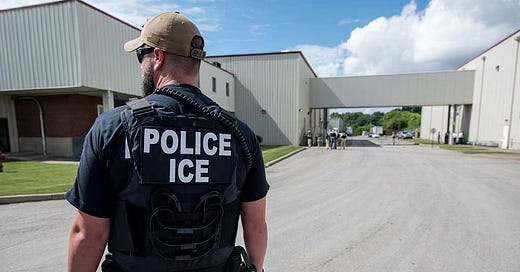Why ICE Fears Accountability
They don’t fear exposure because it’s illegal. They fear it because it works.
When we started the ICE List, it wasn’t to make headlines. It was to answer a question: who are these people? Who is making the decisions to separate families, to detain children, to conduct raids in the middle of the night? For an agency that operates on U.S. soil, ICE was remarkably invisible. That invisibility wasn’t an accident. It was the point.
The lack of oversight isn’t a flaw in the system. It is the system. ICE has long relied on its ability to operate quietly, with little resistance, few investigations, and almost no consequences. Local police help them. Courts ignore them. And the press, with few exceptions, treats their actions as background noise. When we created a space to track them, the pushback didn’t come from strangers. It came from the government.
Almost immediately, we experienced interference. Hosting providers bailed. Redirects broke. Warnings filtered in from journalists, lawyers, and insiders. Suddenly, we weren’t activists, we were a problem. They wanted the site gone not because it revealed anything secret, but because it made the invisible visible.
There is nothing illegal about listing the names of public officials doing public work. These are people who show up in court documents, press releases, arrest records, and even social media. We didn’t expose secrets. We organized facts. But ICE doesn’t fear secrets being revealed. It fears patterns being noticed. It fears that once you name one agent, people will start to see the system for what it is: human decisions, not bureaucratic accidents.
The agents who carry out these arrests are not unknown. They go to work like anyone else. They make choices. When those choices are harmful, they deserve scrutiny. Not harassment. Not violence. Scrutiny. This is what accountability looks like.
The claim that we are inciting violence is not just false, it is projection. The violence is already happening, in detention centers, in raids, in deportations. The cruelty is institutional, and the records are public. What we are doing is reminding the public that someone, somewhere, is responsible for every act of state violence. That those people have names. That those names deserve to be remembered.
The truth is, ICE was never built to withstand daylight. It was constructed to function in the margins, to exploit fear, and to suppress dissent. That model worked for years. But when people started paying attention, it cracked.
We are not the story. The story is what ICE is doing, and what it’s trying to hide. We just forced them to look in a mirror. And they didn’t like what they saw.






Perfectly said!
Courts don't ignore them. By law provided by Congress courts were removed from immigration proceedings decades ago. Attorneys are designated by the DOJ to head the tribunals and determine if federal procedures were followed, has nothing to do with defending rights.